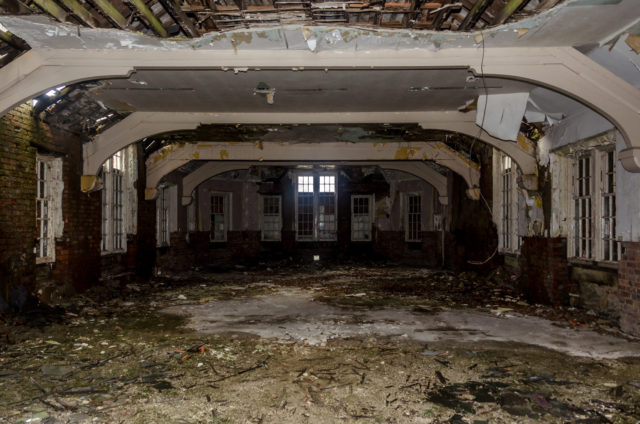Transformation of a Historic Institution: Denbighshire Mental Hospital’s Evolution Over Time
In September 1842, an article published in The Times featured a letter authored by Dr. Samuel Hitch, revealing the mistreatment of Welsh-speaking patients within English asylums. This letter stirred discussions and debates, eventually leading to a significant turning point in mental health care.
#1

#2

#3

#4

#5

A notable gathering occurred at Denbighshire Infirmary in Wales just a month later. Attendees included local affluent residents, encompassing nobility, gentry, and clergy, all sharing a common concern: the inadequate care for Welsh-speaking patients in asylums. Fueled by a desire to improve conditions for their fellow citizens, the decision was made to initiate the construction of a new hospital.
#6

#7

#8

#9

#10

Architect Thomas Fulljame undertook the task of designing the mental hospital, which was realized in 1844. Construction commenced in September 1844 and culminated in October 1848. The hospital’s initial capacity accommodated 200 individuals, and admission was granted to those fluent in Welsh.
The hospital occupied a generous 20-acre plot, a donation from Joseph Ablett. Initially, Welsh authorities hesitated to shoulder financial responsibilities, causing the founders to face difficulties raising funds. However, a breakthrough came when a direct appeal to the royal family resulted in a £200 donation, subsequently inspiring additional contributions.
#11

#12

#13

#14

#15

#16

In 1862, the hospital faced the necessity to expand due to an escalating number of patients. From 1862 to 1865, a new wing was erected to house 150 patients. Adjacent farms were acquired to foster self-sufficiency, and Glanywern Hall was purchased and repurposed for overflow accommodation.
Between 1845 and 1913, the Commissioners in Lunacy conducted inspections of various asylums, consistently criticizing staffing levels at the North Wales facility. Before 1860, patients were left unsupervised from 10 pm to 6 am, a practice that evolved as a dedicated night shift employee was assigned to each hospital section.
The selection of hospital staff was based not only on Welsh language proficiency but also on musical and athletic abilities. Staff often organized social activities for patients, including concerts and dances. In 1892, a landmark step was taken to provide medical training to staff members, with 42 of them successfully passing tests set by the St John’s Ambulance Association.
The hospital reached its zenith in 1956, housing a record 1,500 patients. Subsequently, patient numbers began a gradual decline. The hospital’s layout consisted of separate wings for male and female patients, each assigned gender-specific tasks. Men contributed to the farm, gardens, and craftsmanship, while women managed the laundry, sewing, and mending.
#17

#18

#19

#20

Over time, the British government championed a “Care in the Community” approach, advocating for mental health care within homes rather than institutions. Consequently, plans to close the hospital were formulated in 1987.
By 1991, sections of the facility commenced closure, with the central ward shuttered in 1995 and the entire institution sealed by 2002. Following its closure, the site fell victim to vandalism, theft, and even arson. Fires in 2017 caused severe damage, rendering some parts irreparable.
The hospital structure was sold for £155k in 1999. Despite various proposals, the site remained abandoned. Denbighshire Council was forced to allocate around £930,000 for emergency repairs in 2011, leading to the eventual compulsory acquisition of the property in 2018 by the North Wales Building Conservation Fund.
Several proposals emerged during this time. In partnership with The Prince’s Regeneration Trust, the Fund secured planning permission for apartment conversions and demolition for housing and business units. Signature Living proposed a hotel and housing project, vowing to maintain existing structures.
Ultimately, the Council favored the Fund’s plan, revealing revised designs for 300 houses and partial demolition. Meanwhile, in 2017, the Wellcome Foundation granted £130,000 to catalog and preserve the hospital’s medical records, ensuring its historical significance remains intact.
#21

#22

#23

#24

#25

#26

#27

The journey of Denbighshire Mental Hospital has seen transformations that echo changing attitudes toward mental health care. Its evolution from mistreatment to conscientious preservation encapsulates a remarkable narrative that remains relevant.
Source: abandonedspaces